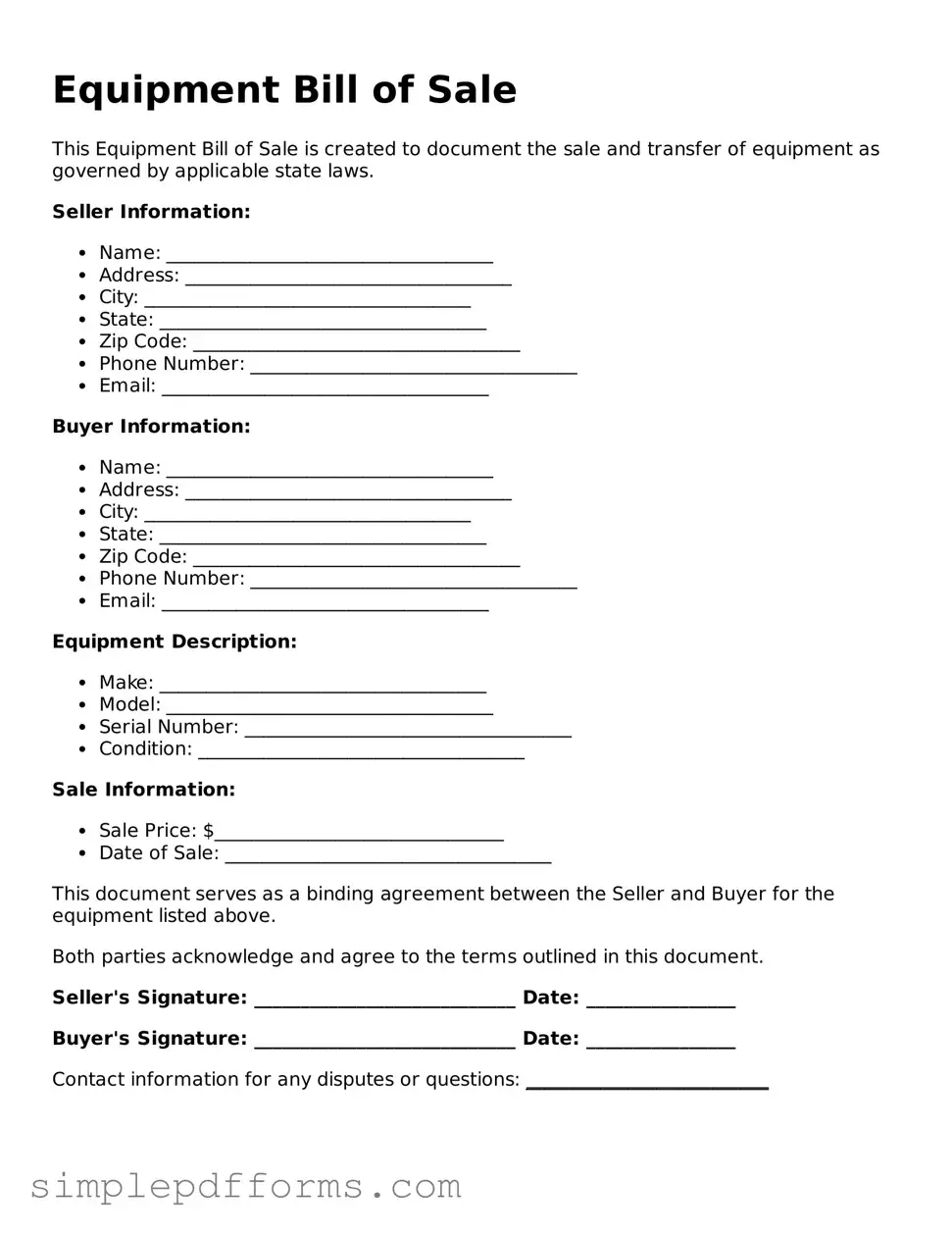When filling out the Equipment Bill of Sale form, individuals often encounter a range of common mistakes that can lead to complications down the line. One frequent error is failing to provide complete information about the equipment being sold. Buyers and sellers should ensure that all relevant details, such as the make, model, year, and serial number, are clearly listed. Omitting this information can create confusion and disputes later.
Another mistake is neglecting to include the purchase price. This figure should be stated clearly and accurately. If the price is left blank or incorrectly noted, it can lead to misunderstandings between the parties involved. Both the buyer and seller must agree on the price to avoid any potential conflicts.
Many people also forget to include the date of the transaction. This detail is crucial as it establishes when the sale took place. Without a date, the document may lack validity, making it difficult to prove ownership or resolve any disputes that may arise.
In addition, some individuals fail to sign the document. A signature is a vital part of any bill of sale, as it signifies that both parties agree to the terms outlined in the form. Without signatures, the bill of sale may not hold up in legal situations, rendering it ineffective.
Another common oversight involves not providing contact information for both the buyer and seller. Including phone numbers and addresses can facilitate communication should any issues arise after the sale. This information is essential for both parties to stay informed and connected.
Inaccurate or incomplete descriptions of the equipment can also lead to problems. It is important to detail any existing damage or wear and tear. Buyers need to understand exactly what they are purchasing, and sellers should be transparent about the condition of the equipment to avoid potential legal issues.
Some individuals mistakenly think that a verbal agreement is sufficient. However, a written bill of sale is crucial for documenting the transaction. It serves as proof of the sale and can protect both parties if disputes arise later on.
Additionally, people sometimes overlook the need for witnesses or notarization, depending on state requirements. Some jurisdictions may require a witness signature or notarization for the bill of sale to be considered valid. Failing to meet these requirements can invalidate the document.
Lastly, individuals may not keep a copy of the completed Equipment Bill of Sale. It is essential to retain a copy for personal records, as this document may be needed for tax purposes, future sales, or legal matters. Keeping a record ensures that both parties have access to the terms agreed upon.
